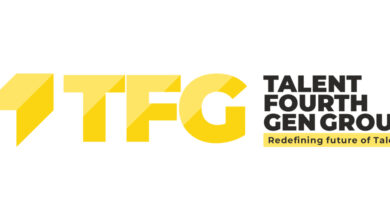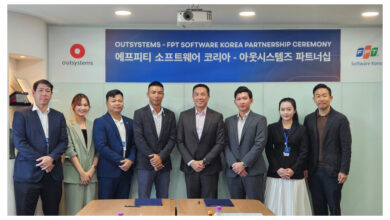Global Distributed Temperature Sensing Market (2020 to 2026) – by Operating Principle, Fiber Type, Application and Region – ResearchAndMarkets.com

DUBLIN–(BUSINESS WIRE)–The “Global Distributed Temperature Sensing Market, By Operating Principle (Optical Time Domain Reflectometry and Optical Frequency Domain Reflectometry), By Fiber Type, By Application, By Region, Competition, Forecast & Opportunities, 2016-2026” report has been added to ResearchAndMarkets.com’s offering.
The Global Distributed Temperature Sensing Market stood at USD576.86 million in 2020 and is forecast to grow at a CAGR of over 6.82% by 2026 due to the rising demand for safety and security in the numerous end-user industries. Technological advancements coupled with rapid development in detection of very small changes in the temperature are driving the growth of the distributed temperature sensing market.
The Global Distributed Temperature Sensing Market can be bifurcated into operating principle, fiber type, application and region. On the basis of operating principle, the market can be divided into optical time domain reflectometry and optical frequency domain reflectometry. Out of these two, optical time domain reflectometry segment is having a market share of 65.27% due to its working principle using backscattered light for temperature monitoring.
In terms of fiber type, the market is segmented into single-mode fiber and multi-mode fiber where the market share of single-mode fiber is 59% due to its continuous monitoring of temperature over a long distance. The distributed temperature sensing market, on the basis of application, can be bifurcated into oil & gas, power cable monitoring, process & pipeline monitoring, fire detection and environmental monitoring. The oil & gas sector has a market share of 35.67% which in turn is expected to boost the market growth over the forecast period. This growth is due to the increasing proliferation in the industries with the generation of significant revenue in the market.
Companies Mentioned
- Baker Hughes Company
- Schlumberger Limited
- LIOS Technology GmbH
- Halliburton Co. (HAL)
- Yokogawa Electric Corporation
- AP Sensing GmbH
- Bandweaver Technology Ltd.
- Sensornet Limited
- Sumitomo Electric Industries, Ltd.
- Weatherford International plc
The largest contributor to the Global Distributed Temperature Sensing Market is the North America region with a market share of 29.17% in 2020. United States is the largest contributing country in the region with 54.79% market shares, followed by Canada and Mexico. The Asia-Pacific region is growing at the highest rate due to its increasing demand for temperature monitoring and ongoing advancements in R&D for the need for miniature sensing systems.
Objective of the Study:
- To analyze the historical growth in the market size of the Global Distributed Temperature Sensing Market from 2016 to 2020.
- To estimate and forecast the Global Distributed Temperature Sensing Market from 2021 to 2026 and growth rate until 2026.
- To classify and forecast the Global Distributed Temperature Sensing Market based on operating principle, fiber type, application, company and regional distribution.
- To analyze and forecast the market size, in terms of operating principle which are optical time domain reflectometry and optical frequency domain reflectometry.
- To analyze and forecast the market size, in terms of fiber type which single-mode fiber and multi-mode fiber.
- To analyze and forecast the market size, in terms of application such as oil & gas, power cable monitoring, process & pipeline monitoring, fire detection and environmental monitoring.
- To categorize and forecast the Global Distributed Temperature Sensing Market by region such as North America, Europe, Asia-Pacific, Middle East & Africa and South America.
- To identify major drivers & challenges for the Global Distributed Temperature Sensing Market.
- To identify major trends in the Global Distributed Temperature Sensing Market.
- To examine competitive developments such as expansions, new product launches, mergers and acquisitions, etc., in the Global Distributed Temperature Sensing Market.
- To conduct pricing analysis for the Global Distributed Temperature Sensing Market.
- To identify and analyze the profile of companies operating in the Global Distributed Temperature Sensing Market.
Key Topics Covered:
1. Product Overview
2. Research Methodology
3. Impact of COVID-19 on Global Distributed Temperature Sensing Market
4. Executive Summary
5. Voice of Customer
5.1. Brand Awareness
5.2. Factors Influencing Purchase Decision
5.3. Selection of Supplier
6. Global Distributed Temperature Sensing Market Outlook
7. North America Distributed Temperature Sensing Market Outlook
8. Europe Distributed Temperature Sensing Market Outlook
9. Asia-Pacific Distributed Temperature Sensing Market Outlook
10. Middle East & Africa Distributed Temperature Sensing Market Outlook
11. South America Distributed Temperature Sensing Market Outlook
12. Market Dynamics
12.1. Drivers
12.2. Challenges
13. Market Trends & Developments
14. Competitive Landscape
15. Strategic Recommendations
16. About Us & Disclaimer
For more information about this report visit https://www.researchandmarkets.com/r/yi8osr
Contacts
ResearchAndMarkets.com
Laura Wood, Senior Press Manager
[email protected]
For E.S.T Office Hours Call 1-917-300-0470
For U.S./CAN Toll Free Call 1-800-526-8630
For GMT Office Hours Call +353-1-416-8900




